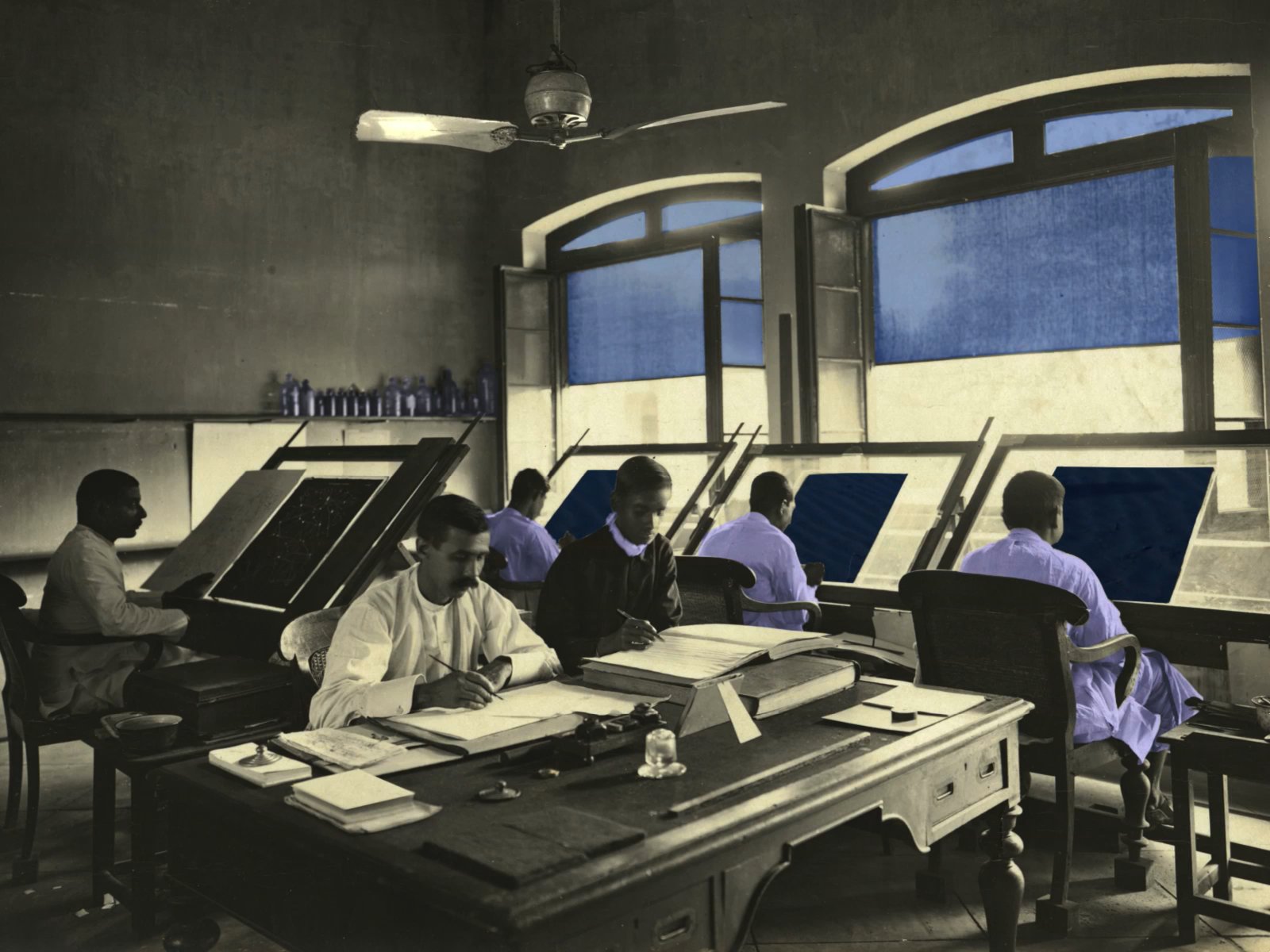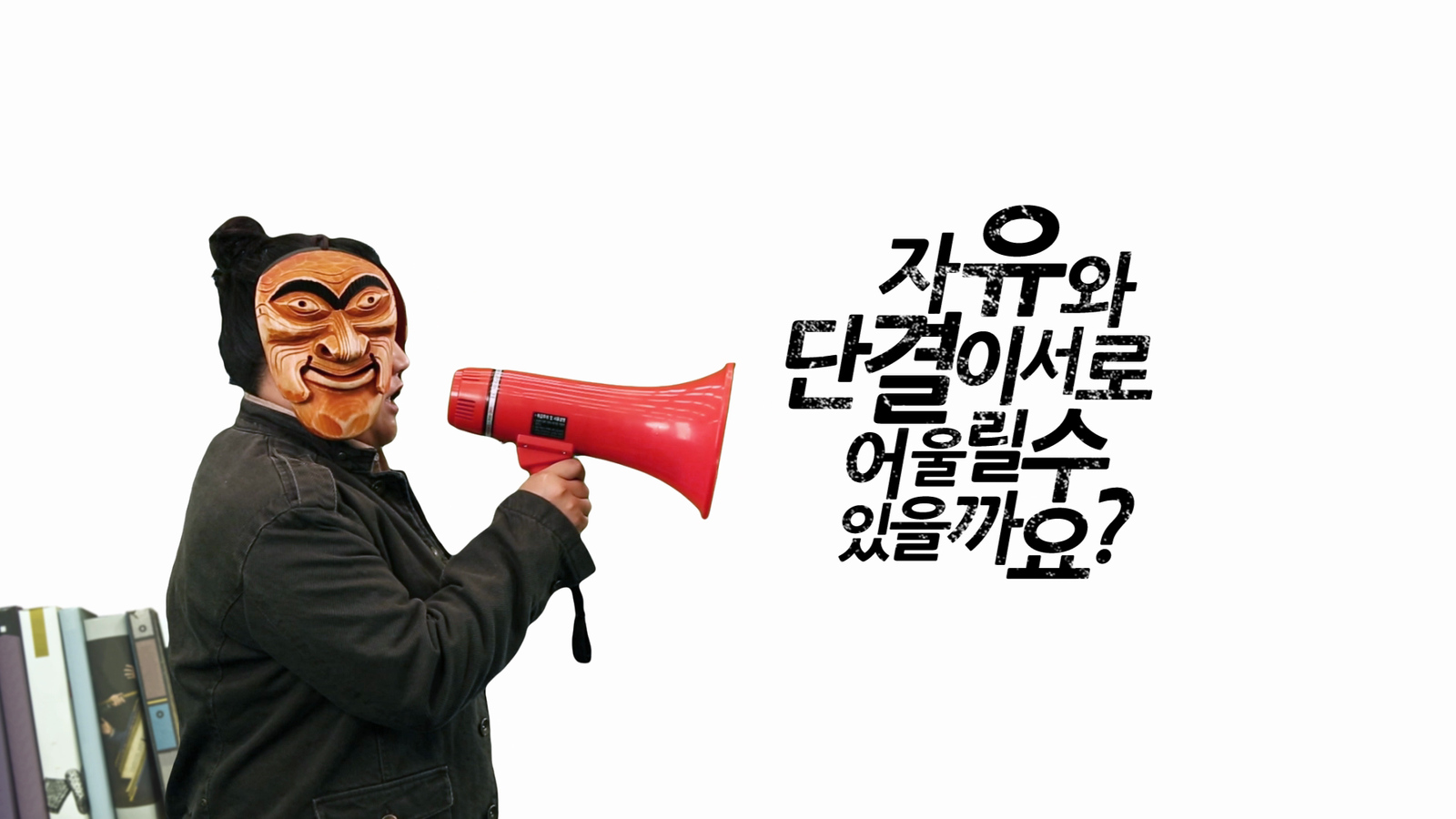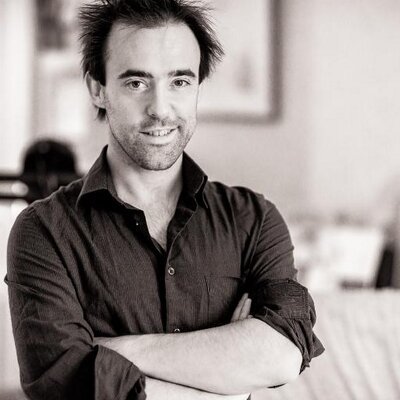India –
For Raqs media collective, the world is the canvas. Raqs was formed by the multi-faceted trio, Jeebesh Bagchi, Monica Narula and Shuddhabrata Sengupta, in 1991. Since then, it has left its trace on land and sea in the form of art installations and exhibitions. Their installation, ‘More salt in your tears’, a textual art installation, floats in the middle of the Baltic Sea at one of the busiest sea routes between Galtby (Korpo island) and Houtskär, reminding people of what it lacks now—salt. They have showcased their exhibitions at places like Documenta 11 and the Biennale in Venice, written and edited books and made videos. They are an integral part of the contemporary Indian art scene. An Afternoon Unregistered on the Richter Scale
An Afternoon Unregistered on the Richter Scale
Emaho: Raqs was conceived while you guys were studying Mass Communications at Jamia Millia Islamia University, New Delhi in 1992. What led to its conception?
We enjoyed working together, arguing with each other, finding images in each others’ memories and conversations, while we were students at the AJK Mass Communication Research Centre at Jamia Millia Islamia University in Delhi from 1989 to 1991. We did not want to get swallowed up and be atomized by the media industry as it was at the time when we graduated. What was conceived while we were studying together was the desire to continue working together post-graduation.
This desire took a concrete form when we got an opportunity to make a (now lost) 16mm film with documentary filmmakers Pankaj Butalia and Johann Feindt at the Max Mueller Bhavan in September 1991, soon after our graduation.
Making things together binds you even more than talking about making things together. We started dreaming of more projects—including an essay film (that remains undone till date) that would look at the history of war, anthropology and photography in the Andaman Islands. We did get a research grant to make this work from Channel 4, and in order to access that we had to form ourselves into an entity. We named ourselves Raqs Media Collective on a post-monsoon afternoon in 1992 at a street side Chinese take-away restaurant next to the petrol pump at Nizamuddin West. Then we made up a partnership deed and opened a bank account. These are the bare bones of how Raqs was formed.
Emaho: The meaning behind Raqs is intriguing. It means a visionary Dervish whirling in a state of trance (the word has its roots in Persian, Arabic and Urdu). Why did you choose a whirling dervish to represent the collective?
Perhaps we had spent an afternoon at the Dargah of Hazrat Nizamuddin before we went to that Chinese restaurant. Perhaps, we had talked a lot with each other about states of transcendence that still require you to keep your feet on the ground. Perhaps, we were intrigued by the idea of a contemplative practice that is not static, like we knew was practiced by whirling dervishes. All of this clustered together to make us think about an agile, highly kinetic way of considering the world and its time. We thought that the word ‘Raqs’ sounded like what we though was a form of kinetic contemplation. That is what keeps us whirling.
Emaho: You have showcased your work at the international contemporary art festivals such as Documenta 11 and the biennale in Venice. How was the experience? What were your favorite moments during the showcasing?
Documenta 11 was a very stimulating experience. It opened up a whole world of practices to us. We were very energized by the range of forms and concerns that Okwui Enwezor’s curation had brought into the ambit of contemporary art. We can recall vividly the experience of looking at work by Multiplicity, by Atlas Group, and by Luis Camnitzer, and realizing that contemporary art was a space of active imagination and analysis. After that, we showed in the section curated by Carlos Basualdo in the Venice Biennale of 2003, and many other international exhibitions followed. What this experience gave us is the sense that contemporary art is an alive, global conversation, which speaks in many different voices and can embody multiple forms – from conceptual immateriality, to film and video, to highly concrete and material practices. The depth and density of exchanges within this variety, is unprecedented, and remains exciting to us. Carbon Twilight
Carbon Twilight
Emaho: ‘The Surface of Each Day is a Different Planet’, a moving-image artwork and lecture was part of the Lightbox exhibition at Tate museum, London, in 2009. The work is described as an examination of “how collectivity and anonymity have been represented over time and how, in the present, the conditions of post-colonialism and globalization contribute to an ongoing crisis of identity and entitlement.” Similarly, the 2009 installation, ‘Escapement’, showcased several kinds of giant-sized clocks that one finds in train terminals and airport lounges. The aim was to reveal the “unruly humanness belied by the orderly timetables…” and how the “standardizing force of globalization attempts to box in human experience”. And the most recent exhibition, ‘Asamayavali / Untimely Calendar’ also explores different facets of time. Time seems to be one of the elemental themes that Raqs has worked with. Would you like to elaborate on your changing “taste” in time with respect to your work over the past two decades?
Perhaps our engagement with the concept of time has moved from marking what time is to what time does. We began by being interested in how time divides space and experience. We are now intrigued by what happens as time gathers and thickens. We are very interested in the dynamics between persistence and change. Why do things persist? What gives life, and not just human life, the strength to withstand the onslaught of what Capitalism does to the planet and to human social conditions? And what makes it possible for us to consider that the present global moment is contingent, ephemeral, subject to human transformation?
So how can time, which is both the marker of persistence as well as the sign of transformation, be used to create a basic vocabulary for thinking about all that we share as species? Our taste in time has grown saltier, tangier, and sharper as time has passed.
In ‘Asamayavali / Untimely Calendar’, we throw in a reference to a story in Mahabharata of Yudhisthira’s encounter with a Yaksha, and to the questions that the Yaksha asks him. The last question is, “And what is the news?” Yudhisthira’s answers, “Time cooks us all, that is the news”. We are being cooked by time and we are savoring the taste of what time is cooking.
Emaho: Last year in February, you hosted Insert2014 in New Delhi, arguably, one of the largest contemporary art exhibitions of its kind in India. How was the experience of hosting it? The idea behind Insert2014 was to “inaugurate a re-thinking of the city’s cultural infrastructure”. Could you elucidate?
Insert2014 was exhilarating. We really enjoyed bringing the kind of work and art that we enjoy seeing across the world to the city. It was a tight and spare exhibition; economical in the way it used resources, it brought to the city a very rich and varied set of aesthetic experiences.
Our intention was to demonstrate that a first class international level contemporary exhibition doesn’t have to be profligate; in the way it takes resources and infrastructure.
We were particularly attentive to how Delhi can be recognized as a city that has spaces that have potentially rich contemporary cultural profile. To this end, the installation of the exhibition in Mati Ghar at the IGNCA (Indira Gandhi National Center for the Arts) is a space that has rarely been used for showing contemporary art before.
We initiated a project called ‘New Models on Common Ground’, within Insert2014, that brought together research on cultural infrastructure in the city with propositions and plans for bringing them alive in a really imaginative way.
With an active desire to put in place a series of cultural transformations in the city’s material fabric, Insert2014 brought together incredible art from all across the world to Delhi. We think that the consequences of this encounter will yield interesting results in the future. Corrections to the First Draft of History B
Corrections to the First Draft of History B
Emaho: Raqs projects emerge from abstractions and ideas and each artist working on them has their own distinct style of observation and inference. Do you face any issues while concurring on the inferences drawn on these projects?
We are three very different people, and the authorship of any work by Raqs locates itself at the intersection of our different ways of looking at the world, and at our practice. This does not produce an average or a compromise between divergent positions. Rather, it finds a position that augments our very distinct individual sensibilities. That is the pleasure of working in a collective—knowing that what we do together fundamentally strengthens our distinct visions. Typically, works gestate in long conversations. Sometimes these conversations can span years. We work on a variety of different questions at the same time. Works emerge from how this process responds to different invitations and commissions, and from the questions taking particular stances and forms at different points in time. Our studio is the repository of all our questions to each other and to the world. This repository thickens with time, and yields ideas and germs of images that become the provocations and catalysts for new work. This is how we work, every day.
Emaho: You co-founded Sarai in 2000 as you felt a need to create a space to collaborate with other artists, philosophers and media practitioners. Sarai is a place that sustains artistic and creative engagement within the urban space and explores different forms of media. How has Sarai’s relationship impacted the workings of Raqs?
We co-founded Sarai in 2000 and had an active engagement with Sarai till 2012. Sarai was the anchor and fulcrum of our practice for much of this time. Some have said that Sarai was the most extensive artwork that Raqs contributed to. We will not dispute that, but will insist that Sarai had inputs from many different sources, and was the refuge of many necessary and difficult conversations. It created a climate of collegiality and collaboration that we think was a crucial impetus to the origin and sustenance of many significant practices in the milieu we all inhabit. For us, Sarai was a laboratory, a garden of wild and wonderful ideas and a living archive of the contemporary moment. The experience of co-founding (with Ravi Sundaram and Ravi Vasudevan at CSDS) and working in Sarai expanded our horizons, gave our ideas heft and ambition and immersed us in a very rich, global web of conversations that brought together cutting-edge practices in research, culture, technology and a new political and aesthetic sensibility rooted in the global urban condition. That experience will always sustain us.
Emaho: Cyber Mohalla is a cyber space created within Sarai for the younger populace living in the working class neighborhoods of Delhi to pursue their creative endeavors. Are there more projects in the pipeline that would benefit the working class population in Delhi and help them work on their creative pursuits?
As we just said, our association with Sarai came to a formal close in 2012. The Cybermohalla Project had also wound down by then. We remain in close contact with some of the people who were involved with the Cybermohalla Project in several ways. The Cybermohalla Project, like many other really wonderful initiatives at Sarai, came to an end because the funding that sustained them dried up. This should give us all an opportunity to reflect on why our social world finds it unable to support initiatives that continue to be hailed, in a sense, ‘posthumously’. Our Tower of Liberty
Our Tower of Liberty
Emaho: To you, ‘Asamayavali / Untimely Calendar’, your latest exhibition at the National Gallery of Modern Art, New Delhi, is “an account of a time that is out of sorts; a time that is exciting and sits uneasily on our consciousness,” and it is a “reading contemporaneity, a working mill of ideas that face the future.”
In one of the recent interviews, while talking about the exhibition, you refer to the Krishna Dwaipayan Vyas in your response. “In our view, the work of art takes place in the viewer’s mind. All objects and images are triggers for experiences that we believe can take place within the viewer. You can be triggered in one direction and that may find an echo in another work.” Would you elucidate these thoughts for our audience?
The most interesting works of art and literature are those that continue to play an active part in the minds of those who encounter them, long after they were made. This means that part of the ‘work’ of art actually takes place in the mind of the reader or the viewer. We like to approach our practice with the view that its unfolding is not something that will happen only at the moment when it is first encountered. We like to think of ourselves as viral agents infecting the ground of the future of the consciousness of our publics. ‘Untimely Calendar’ is a device that makes a claim not just on the time when it is viewed and experienced first. Its ambition is to sneak into the future of its viewer’s consciousness and conversation. Just as the Mahabharata narratives, apparently first gathered together by a man we know as Krishna Dwaipayana (the dark, island born) Vyas, continue to clamor for attention in our minds several thousand years after their first utterance.
Emaho: Also, in one of the interviews while talking about ‘Asamayavali / Untimely Calendar’, Sengupta said that the space of the exhibition was extremely important: “The space was very important and we chose the Jaipur Hall for its labyrinth-like quality to create the fabric of the exhibition. The articulation of the structure and design of the show was paramount.” How did space, structure and design play such an important role in defining an un-definable and complex character such as time?
The space of Jaipur House at the NGMA is also a space of memory. We have very vivid memories of spending time in its rooms and corridors as children, as teenagers, and in our twenties. These memories mean that the space itself has a relationship with us, of an old friend, or with a slightly eccentric aunt (the one who eloped, the one with whom you shared your first cigarette, the one who told you the best stories).
In our conversation with Vishal K. Dar, who worked on what we call the mise-en-scene and montage of this show. We were clear that the space of Jaipur House, with its labyrinthine and mirroring architecture, had to be an element in unfolding the narrative of the show. Everyone who has been to the show remarks how the space has been transformed. All we have done is to let the works speak to the space, and to listen to what the space has to offer in exchange. The viewer is effectively ‘overhearing’ this conversation.
Emaho: What is your favorite part of the exhibition ‘Asamayavali / Untimely Calendar’? There are some very interesting themes that seem to bind and unbind time. The juxtaposition of contemporary city life and the epic narrative of the Mahabharata with KD Vyas’s correspondence—resembling the Mahabharata, for instance, or ‘Revoltage’—are completely different depictions of time, yet have the underlying current of time. How did you come up with such varied themes?
This ‘variety’ is a result of all the different strands of our thought, our questions, and our images coming together. It is difficult to mark a ‘favorite’ moment or corner, but the experience of being struck by the fragrance of orange blossoms while looking at a worker’s newspaper arrayed across twenty-two years after having read the hours of a twenty-four hour clock is a strong contender. This is not about a particular work, but about the way in which different works come together to create a complex but vivid experience.

Emaho: What are some of the favorite curated exhibitions you’ve seen over the years?
Some of our favorite curated exhibitions include Okwui Enwezor’s Documenta11 in 2001, for the way it brought the world alive in contemporary art. A retrospective exhibition of the artist Paul Thek’s work at the Reina Sofia Museum in Madrid, for its sensitive examination of human fragility. A survey of the work of Chen Zhen, Chinese artist in exile, curated by Geral Matt that we saw at the Kunsthalle Wien in Vienna in 2007, for its capacity to articulate both scale and intimacy. The roving, Animism exhibition, curated by Anselm Franke, for its playful intensity. All of these exhibitions embody what we find most exciting about contemporary art—that it is the playground of ideas and a forest of forms.
Art & Culture Interviewed by Manmeet Sahni

























